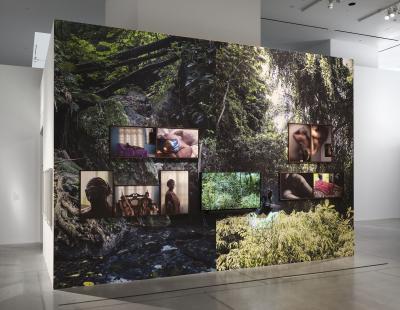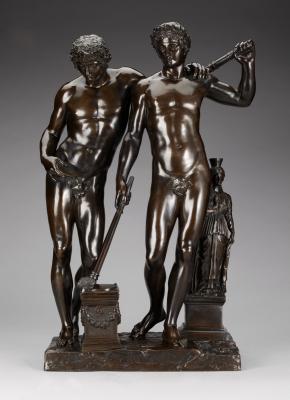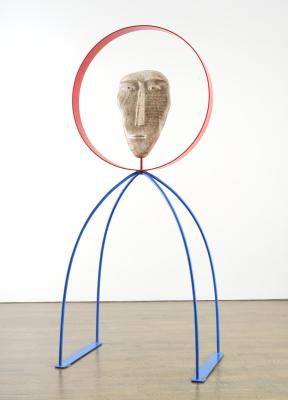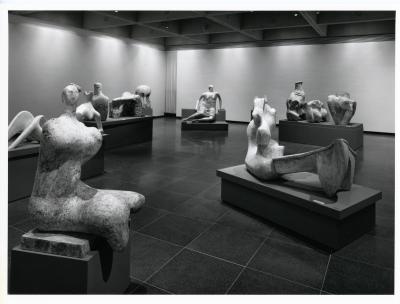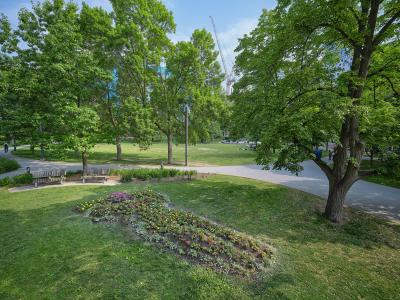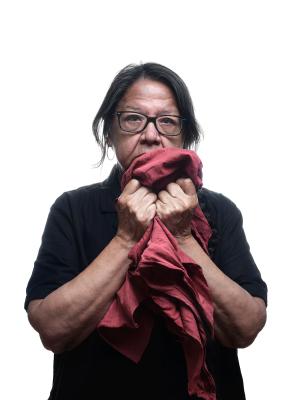A new monument lands in Brooklyn
Look up at Nicholas Galanin’s 30-foot-tall steel sculpture in New York City

Nicholas Galanin, In every language there is Land / En cada lengua hay una Tierra, 2023. Corten steel. Courtesy of the artist and Peter Blum Gallery. Photo: Nicholas Knight, courtesy Public Art Fund, NY. Presented by Public Art Fund at Brooklyn Bridge Park, New York, May 16, 2023–March 10, 2024.
A new 30-foot tall steel sculpture stands beside the Brooklyn Bridge. Spelling out “LAND,” it’s the first public artwork in New York City by Lingít and Unangax̂ artist Nicholas Galanin. The sculpture combines references to the U.S.-Mexico border wall and Robert Indiana’s 1966 sculpture LOVE and considers the legacy of colonization and its impact on migration and our relationships with land across generations, cultures, and communities.
Titled In every language there is Land / En cada lengua hay una Tierra, the sculpture was made using the same steel tubing and scale of the U.S.-Mexico border wall. Galanin’s work defeats the function of the wall as a barrier to entry, instead focusing on the Indigenous connection with land and mutual sustainability that transcends borders. Simultaneously giving nods to the border wall, mass marketing and Indigenous conception of interconnectedness with land and fluid communities, the sculpture stands tall as a monument in the public park.

Nicholas Galanin, In every language there is Land / En cada lengua hay una Tierra, 2023. Corten steel. Courtesy of the artist and Peter Blum Gallery. Photo: Nicholas Knight, courtesy Public Art Fund, NY. Presented by Public Art Fund at Brooklyn Bridge Park, New York, May 16, 2023–March 10, 2024.
The form and font of the sculpture draw from Pop Art imagery, implicating mass media and pop culture in the dissemination of nationalism. Presenting the title in both English and Spanish was intentional as both were languages imposed by colonial regimes on either side of the U.S. border – prompting audiences to think about non-Indigenous approaches to ownership, exclusion and division of national borders.
“I think it is important to remember colonial language has been utilized to erase and remove our communities and still happens with place names and with the removal of Indigenous language from community to forcefully assimilate,” said Galanin when asked about the title of the artwork. “That happens on both sides of a now national border in different ways and in two different languages. So, for me, language is deeply connected to place and land. Always is and will be.”
A unique feature of the sculpture is that the viewer’s experience differs depending on the vantage point. Viewed head-on, it reads “LAND” but if you were to move through and around the work, the forms shift and change. The lines and shapes become abstract and blurred. This feature spotlights the lack of borders and division in Galanin’s Indigenous view of a united natural ecosystem and way of life. The open structure of the steel beams allows visitors to walk through and engage in the sculpture. While the rigid material exudes a sense of brutality and harshness, the open and inviting concept immerses people into an inviting and welcoming route.
Galanin’s art stems heavily from his experience as a Lingít and Unangax̂ person connected to the land and culture to which he belongs. He embeds Indigeneity into storytelling through concept, form, image and sound. He works with a variety of mediums including sculpture, installation, film and performance. Based in Sitka, Alaska, Galanin puts a contemporary perspective on historical and social narratives around the Indigenous community through his works. His pieces are often multilayered and seek to envision, build and support Indigenous sovereignty.
In every language there is Land / En cada lengua hay una Tierra remains on view through May 10, 2024, in Brooklyn Bridge Park at the north side of the Empire Fulton Ferry Lawn and is curated by Public Art Fund Artistic & Executive Director Nicholas Baume with support from Assistant Curator Jenée-Daria Strand


















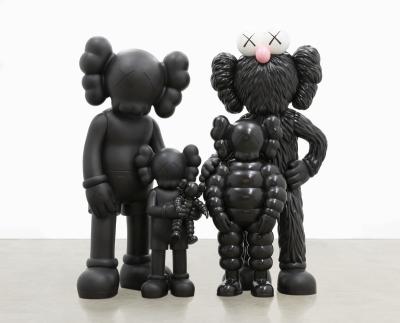
![Keith Haring in a Top Hat [Self-Portrait], (1989)](/sites/default/files/styles/image_small/public/2023-11/KHA-1626_representation_19435_original-Web%20and%20Standard%20PowerPoint.jpg?itok=MJgd2FZP)







